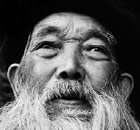Society
China has 'sufficient labor pool for next 40 years'
By Xin Dingding and Shan Juan (China Daily)
Updated: 2010-03-27 08:23
 |
Large Medium Small |
BEIJING: Although facing an aging population, China will be able to maintain its development thanks to a sufficient labor supply for at least the next 40 years, a counselor to China's Cabinet on population issues has assured.
| ||||
But still, many experts are suggesting that the government should rethink and adjust its family-planning policy to ease the aging trend.
China is an aging society, with some 180 million people older than 60 by 2009, accounting for 14 percent of the total population, Ma Li, former director of China Population and Development Research Center and now a counselor to the State Council, told China Daily.
The aging population is expected to peak in the 2040s, when one out of every three is older than 60, she said.
"But the shortage of the labor force would not appear in the foreseeable long term," Ma added.
China will see two peaks of labor supply, in 2016 and 2026, with 1 billion working-age people, up from 909 million in 2009, according to calculations and estimations by the inspector of the migrant population management division under the National Population and Family Planning Commission.
"By 2050, the number of labor force will be equal to the level of 2020, higher than that of 2009," she said, without giving the detailed number.
But she admitted that the "demographic dividend" is expected to diminish by 2030s. The "demographic dividend" has long been thought an important source of China's remarkable economic performance.
Over the past decades, China enjoyed a productive population age structure, with working-age people making up a large part of its population while retired and pre-working-age people were a relatively small fraction. As a result, the country enjoyed an endless supply of labor and also carried a comparatively light pension burden.
Such a productive population age structure, characterized by abundant labor forces and a high savings ratio, proved to be a dynamic source of economic growth for China, and consequently took the country into a long "golden period" of economic and social development.
Wang Ming, professor at Tsinghua University, said that the government should rethink and adjust its family planning policy and permit each couple to have two children, in order to increase labor supply and extend the "demographic dividend" period.
"Social and economic conditions for each family to have two children are mature now. The scale of the possible birth peak as a result of the policy relaxing will also be controllable," Wang said.
The current one-child rule restricts only part of the population, mostly in large and medium-sized cities. Policies have been relaxed in the past few years to allow urban couples who are both the only children of the family to have two children, too, just like rural couples.
Liu Dajun, a Shandong University professor, said allowing couples to have more than one child would also help ease many social problems brought by the one-child rule in cities.
The rule has prevented the birth of an additional 1.3 billion people since its implementation in 1980, but it also caused problems such as the advanced arrival of an aging society and the unbalanced gender proportion, Liu said.
"By 2020, men at marriageable age will outnumber women by 50 million, which means one out of every four men will not be able to find a wife," he said.











